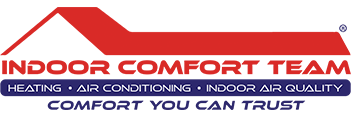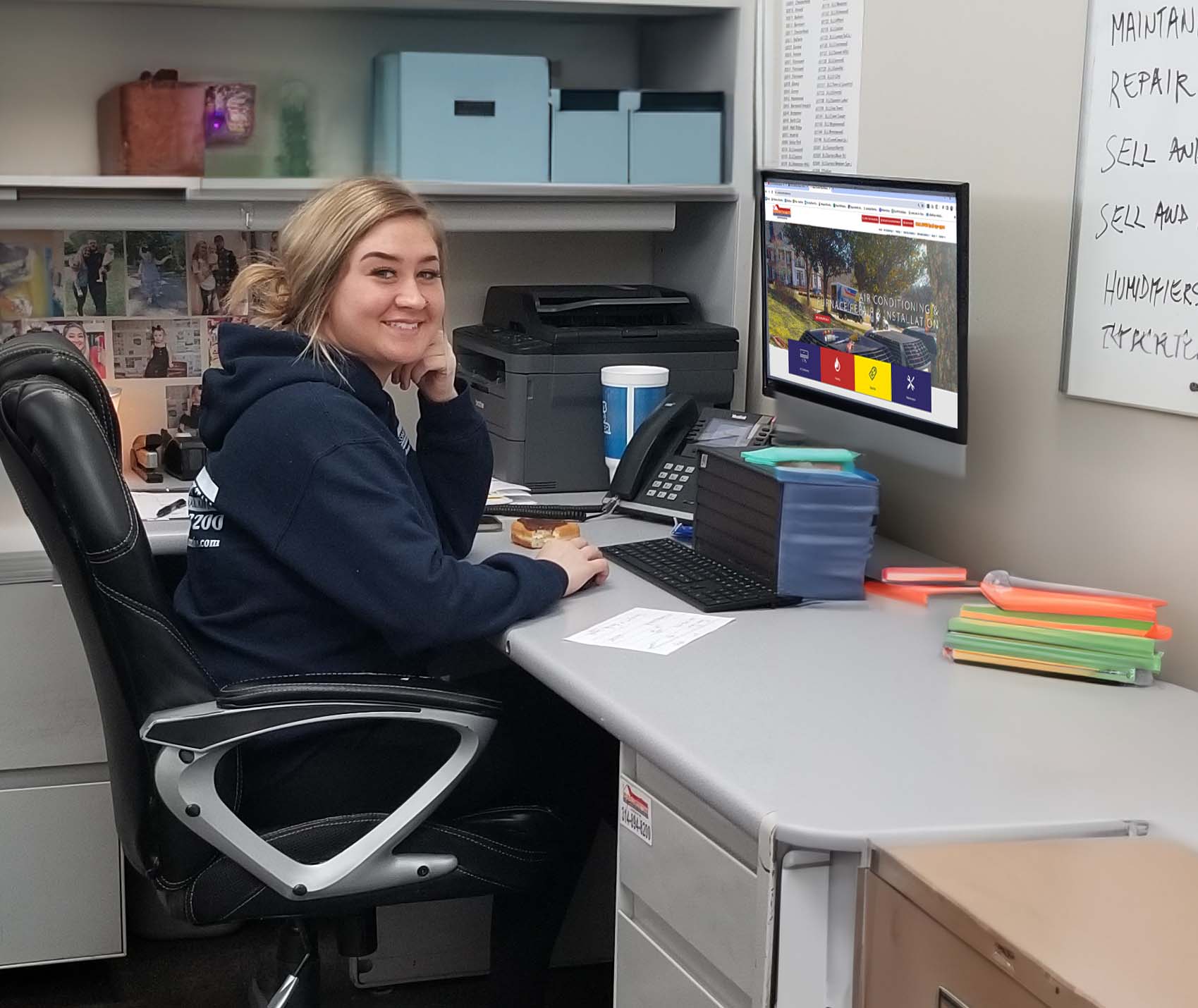Finding water on the floor around your HVAC unit can be concerning and may indicate an issue that needs attention. Before calling in the professionals, there are some troubleshooting steps you can try on your own to identify and resolve the problem.
Since 1979, Indoor Comfort Team has been the trusted HVAC expert on both sides of the river in St. Louis, ensuring homes stay comfortable and systems run efficiently.
In this blog, we’ll guide you through what to check when you notice water pooling around your HVAC unit.
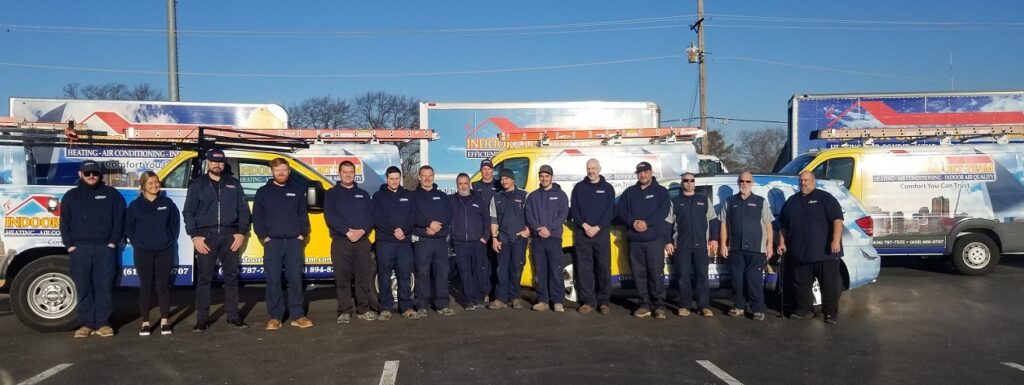
Improper Installation
Water discovered on the floor around new HVAC equipment can usually be attributed to improper installation. Your unit has many important components, and the improper placement or configuration of any part can result in a leak.
First, inspect the condensate trap to determine if it’s properly designed. An improper trap design can stop the condensate from draining, causing water to build up in the drain pan and overflow onto the floor. Hire a qualified HVAC technician to install your HVAC system to prevent this issue.
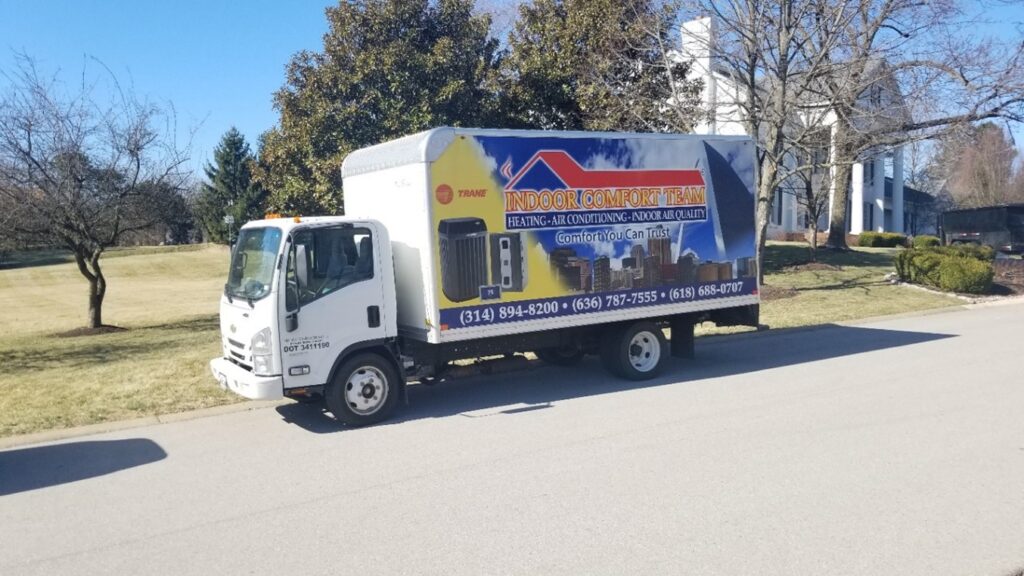
Poor Insulation
Air vents and ductwork need to be properly insulated to prevent moisture from escaping into your home. Built-up condensation in the unit can leak from poorly insulated vents and ducts, causing wet spots that may appear on walls, ceilings, and even floors. Consult an HVAC technician who will inspect the ductwork to determine if inadequate insulation is the problem.
At Indoor Comfort Team, our background-checked, licensed, and trained technicians have extensive experience handling these types of calls. We offer both performance and satisfaction guarantees, ensuring that you’ll be satisfied with both our equipment and customer service.
Clogged Condensate Pipe
Dirt and dust can accumulate in condensate drain lines over time. If not regularly cleaned, these pipes can become clogged, preventing condensation from traveling from the unit to the drain pan. When the pipe is blocked, water backs up into your home.
To determine if a clogged condensate pipe may be the problem, consider the volume of the leak. Clogged condensate pipes generally result in a slow drip. If there is a constant flow of water, it could mean that the condensate pipe has been punctured or disconnected.
Dirty Air Filter
Regularly changing the air filter in your HVAC unit can help keep your unit running smoothly, lower your utility bills, and promote good air quality in the home. When you forget to replace the air filter, it can become clogged with dirt, dust, and debris.
Clogged air filters prevent proper airflow over the evaporator coils, which causes them to get too cold and ice over. Ice accumulation on the evaporator coils then thaws, leading to more water than the drain pan can handle. The excess water may then overflow the drain pan onto your floor.
Ideally, air filters should be cleaned about every two weeks, especially during peak cooling and heating seasons, and replaced every three to four months. More frequent replacements may be required in homes with pets, allergy sufferers, or homes located in dusty, dry climates.
Frozen Evaporator Coil
Frozen evaporator coils are generally caused by inefficient airflow. While a dirty air filter is one of the most common causes of ice accumulation on evaporator coils, ice buildup may have other underlying causes, such as backed-up drain clogs or a low fan speed.
The unit’s evaporator coil can get covered in dust, dirt, and grime which prevents it from getting enough airflow to transfer heat, causing the system to freeze over. That is why regular evaporator coil cleaning is a key component of any AC tune-up service.
Indoor Comfort Team makes maintaining your heating and cooling systems simple by offering our VIP Club Plan that help protect against costly breakdowns and include perks like two annual tune-ups a year, priority service, and more. Give us a call at (314)230-9542 or visit https://www.indoorcomfortteam.com/services/maintenance-agreements/ to learn more.
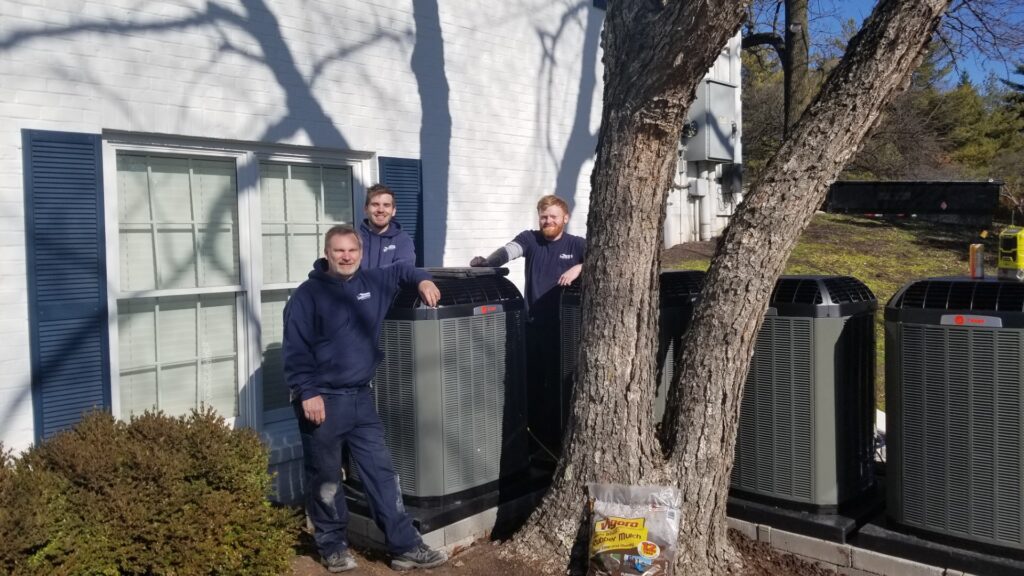
Damaged Drain Pan
As your HVAC equipment ages, it will show signs of wear and tear. One of the most common signs of an old unit is a damaged or rusted drain pan. This usually occurs when the equipment reaches 12 to 15 years of age. As the drain pan is constantly exposed to moisture, it can degrade over time.
If you see rust inside the drain pan, you may spot weak spots where water is leaking onto your floor. Closely examine the drain pan for cracks or holes and decide whether it should be repaired. Minor cracks can often be patched with a quality water-resistant sealant. More extensive damage may require a drain pan replacement.
Broken Sump Pump
In a typical setup in which the furnace and indoor AC unit are located in the basement or attic, there is a condensate pump that pumps water outdoors. Once the water level in the condensate pump reservoir rises to a certain level, the float switch inside the pump is triggered, forcing the water to drain outside the home.
If this pump breaks or is malfunctioning, water can leak onto the basement floor. If you suspect that your condensate pump may be broken or malfunctioning, contact an HVAC technician to test and replace the pump if needed. At Indoor Comfort Team, we offer only quality replacement products.
Low Refrigerant Levels
HVAC systems contain a chemical called refrigerant, which helps prevent the pressure inside the unit from dropping too low. This can cause the evaporator coils to freeze. When the coils thaw, they can cause the drain pan to fill and overflow. Low refrigerant levels are usually caused by a leak.
Several signs could indicate that your refrigerant levels are low, such as hissing, bubbling, or gurgling noises that come from your refrigerant lines. In addition, you may notice that your unit is not effectively cooling your home. Low refrigerant levels require an HVAC technician to repair the leak and recharge the system.
Drain Line Disconnect
In some instances, water around the floor of an HVAC unit may be due to a disconnected drain line. When the drain line is not properly attached, water can leak from the connections. Drain line disconnect is most commonly caused by improper installation, improper repair, or a line that has become loose over time.
If the drain line is disconnected, call in an HVAC technician to inspect the condition of the drain line and reconnect it.

Problematic Humidifier
Some homes are equipped with whole-house humidifiers, which are designed to add moisture to the air to prevent dryness and irritation. These systems are often configured with furnaces and rely on water to increase the amount of moisture in the air.
However, when the lines attached to the humidifier are poorly fitted, cracked, or otherwise damaged, the excess water that is supposed to travel into the drain line can end up leaking onto the floor. Leaks can also develop when clogs form inside the drain line. Contacting an HVAC technician can stop the leak and related problems, such as water damage and mold growth.
Lack of Routine Maintenance
The best way to prevent water leaks and associated damage to your home is by having your unit regularly maintained by an HVAC professional. Regular maintenance to-do lists should include replacing dirty air filters, inspecting vents and ductwork, cleaning evaporator coils, flushing the drain line, and diagnosing potential problems with the unit.
For worry-free routine maintenance, sign up for our VIP Club Plan and let the professionals at Indoor Comfort Team take care of it. Visit https://www.indoorcomfortteam.com/services/maintenance-agreements/ or call us anytime at (314)230-9542 to learn more.
Contact Indoor Comfort Team for Prompt Service
If you’ve tried these troubleshooting steps and still notice water around your HVAC unit, it’s time to call in the experts. Indoor Comfort Team has been the trusted HVAC professional in St. Louis since 1979, providing reliable solutions to keep your system running smoothly.
Don’t let a small leak turn into a bigger issue—reach out to us anytime at (314)230-9542 for expert service and peace of mind. We’ll quickly diagnose the problem and ensure your home stays comfortable and safe year-round.

